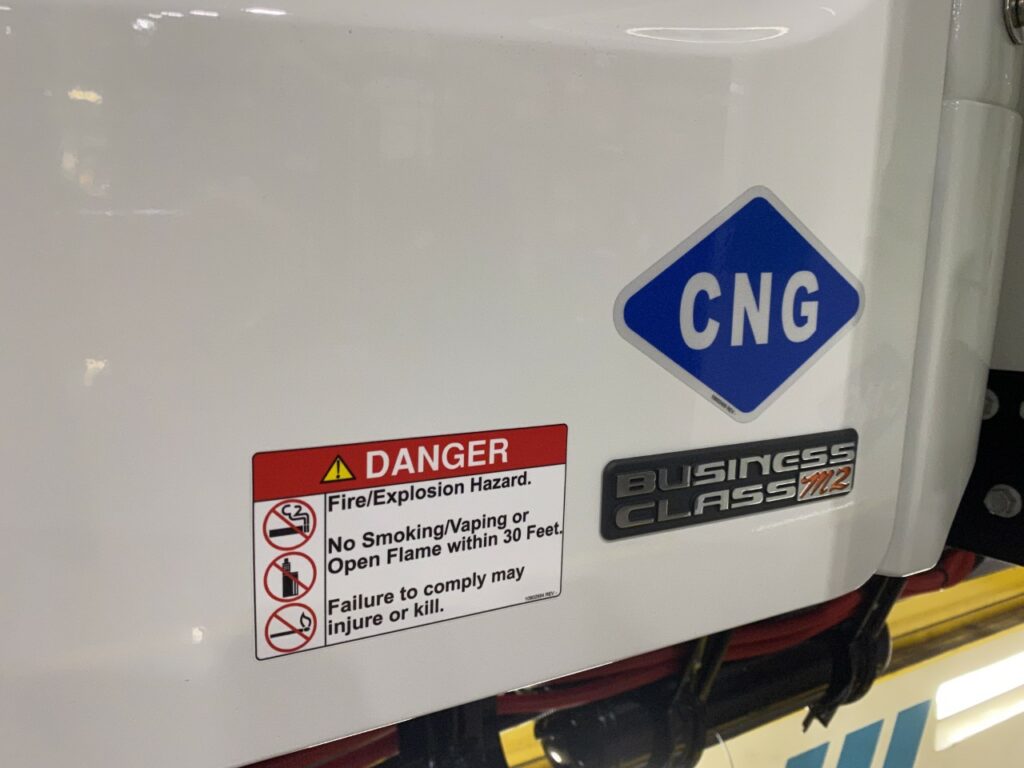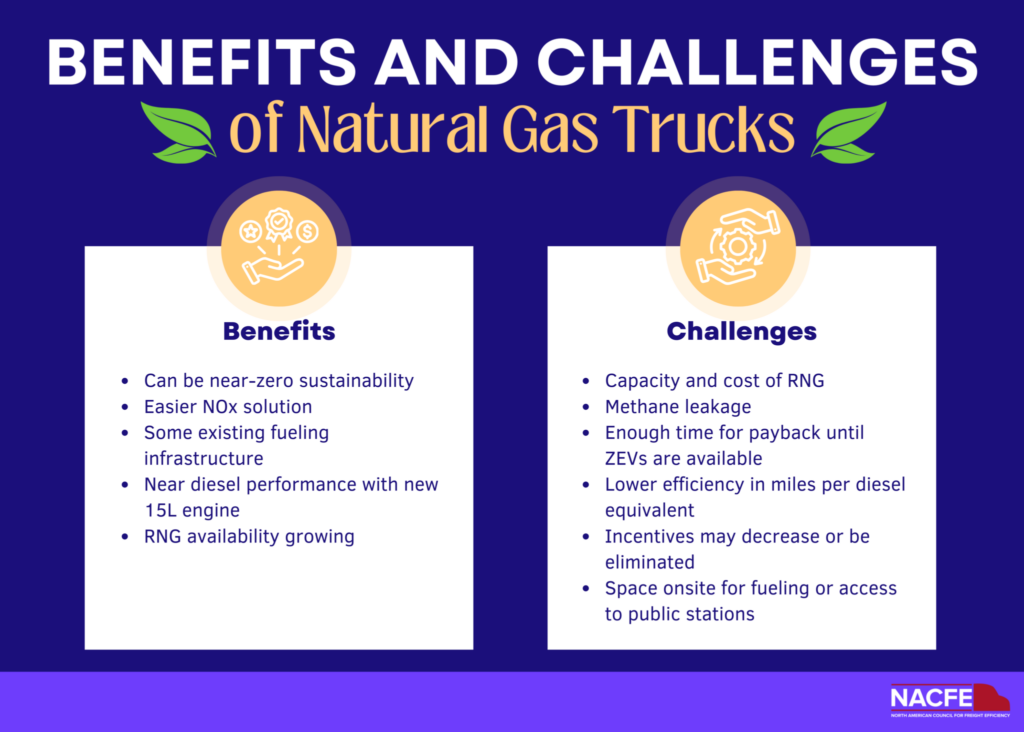NACFE report gives fresh take on natural gas as trucking fuel
Natural gas is seeing some renewed interest from the trucking sector, thanks to its lower carbon output than diesel and the fact new engines are coming online that will widen its applicability.
Cummins will launch its X15N natural gas engine this year, filling the current void in the 15-liter engine space and allowing heavier payloads than the 80,000-lb. GVWR the ISX12N was limited to. That engine can meet existing, and impending EPA27 emissions standards, while falling short of qualifying for the zero-emission category that will be required further down the road.

Renewable natural gas (RNG) now accounts for 69% of natural gas consumed for transportation, and can help fleets become carbon neutral, or have a negative carbon intensity when created from a waste source feedstock such as the manure produced at dairy farms. Converting that to RNG prevents the methane contained within animal waste from entering the environment, achieving that negative carbon intensity.
The North American Council for Freight Efficiency (NACFE) has issued a new confidence report on natural gas, given these recent developments.
“Natural gas is part of the messy middle,” NACFE executive director Mike Roeth said on a conference call to discuss the report. He’s referring to the array of fuels and technologies that will help fleets decrease their carbon footprint before going completely to zero-emission vehicles. “RNG may be one of the single biggest reasons why natural gas has such a big role in decarbonizing trucking as we move forward.”

The challenge with RNG is that its supply is limited, and it’s more costly to produce than conventional natural gas. The good news is, it’s fully interchangeable with natural gas when an RNG supply can be secured.
“Note that this opportunity will not go away in the near future,” NACFE’s report, Natural Gas’s Role in Decbarbonizing Trucking, reads. “There will always be dairies, chicken farms, cattle, garbage dumps, rotting, grasses, swamps, etc. All of this will decompose and emit methane into the atmosphere, so this opportunity needs to be seized and RNG is an excellent way to take advantage of it.”
Near-zero
Pair natural gas with an electric hybrid powertrain and such-powered vehicles will quality as “near-zero emission” vehicles.
Roeth said fleets should be thinking ahead to going zero-emission, as that’s the end goal being pushed by government.
“We believe that’s where we’re ultimately going to get,” Roeth said. But, he acknowledged natural gas is a good alternative for applications where zero-emission trucks remain impractical today. Natural gas performs well when it comes to NOx emissions, which will qualify it for the coming EPA27 standards. More than 1,400 natural gas fueling stations already exist in the U.S., with 772 of them publicly accessible.
Roeth pointed out many truck fleets using natural gas have installed their own fueling infrastructure “behind the fence,” or at their own depots. The new X15N is expected to give diesel-like performance, but there are other challenges related to the fuel.
“The question we had, and still have, is how much RNG is there available and how much will trucking get of that RNG from a feedstock and production standpoint,” Roeth questioned.
Methane leakage along the supply chain is also a concern. And fleets looking to service their own natural gas-fueled trucks will likely need shop modifications, since natural gas is lighter than air and any leaks will accumulate against the ceiling of the shop.
If significant investments are required for shop modifications, or the installation of private fueling pumps, the NACFE report wonders if a payback will be achievable before zero-emission trucks are required.
“CNG and RNG offer a lot of benefits as we decarbonize the transportation industry, however, there are challenges,” says Jeff Seger, NACFE’s clean energy consultant. “Each fleet must assess all of these to be assured it is the right solution while in the messy middle.”
Added Roeth in a related press release: “Natural gas engines need to be looked at as part of the ‘messy middle’ so fleets can decide if they want to invest in it considering other powertrain options. It has it pluses and minuses, but it does produce less CO2 per unit of energy on a full-comparison basis compared to No. 2 diesel fuel.”
9 key findings
The report offered nine key findings about natural gas use in commercial vehicles:
- There appears to be a wide range in perception and results regarding the business case for natural gas.
- There are several positive environmental aspects of natural gas engines.
- There are environmental concerns with natural gas.
- Sustainability goals, regulations, and the California conundrum are considerations.
- The new 15-liter Cummins X15N engine seems promising.
- Aftertreatment is simple and more reliable.
- Natural gas is very abundant in the US.
- There is a question as to whether there will be an ample supply of RNG.
- Because of economics and the environment, there are a few points to consider when comparing BEV and CNG.
The complete report, including further analysis of each of those key findings, can be downloaded at www.nacfe.org.
Have your say
This is a moderated forum. Comments will no longer be published unless they are accompanied by a first and last name and a verifiable email address. (Today's Trucking will not publish or share the email address.) Profane language and content deemed to be libelous, racist, or threatening in nature will not be published under any circumstances.